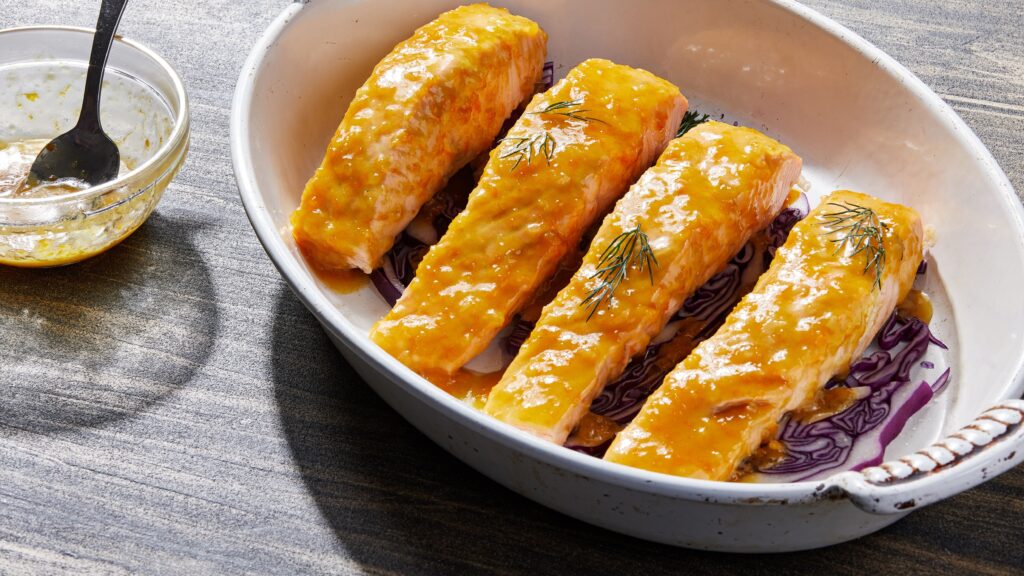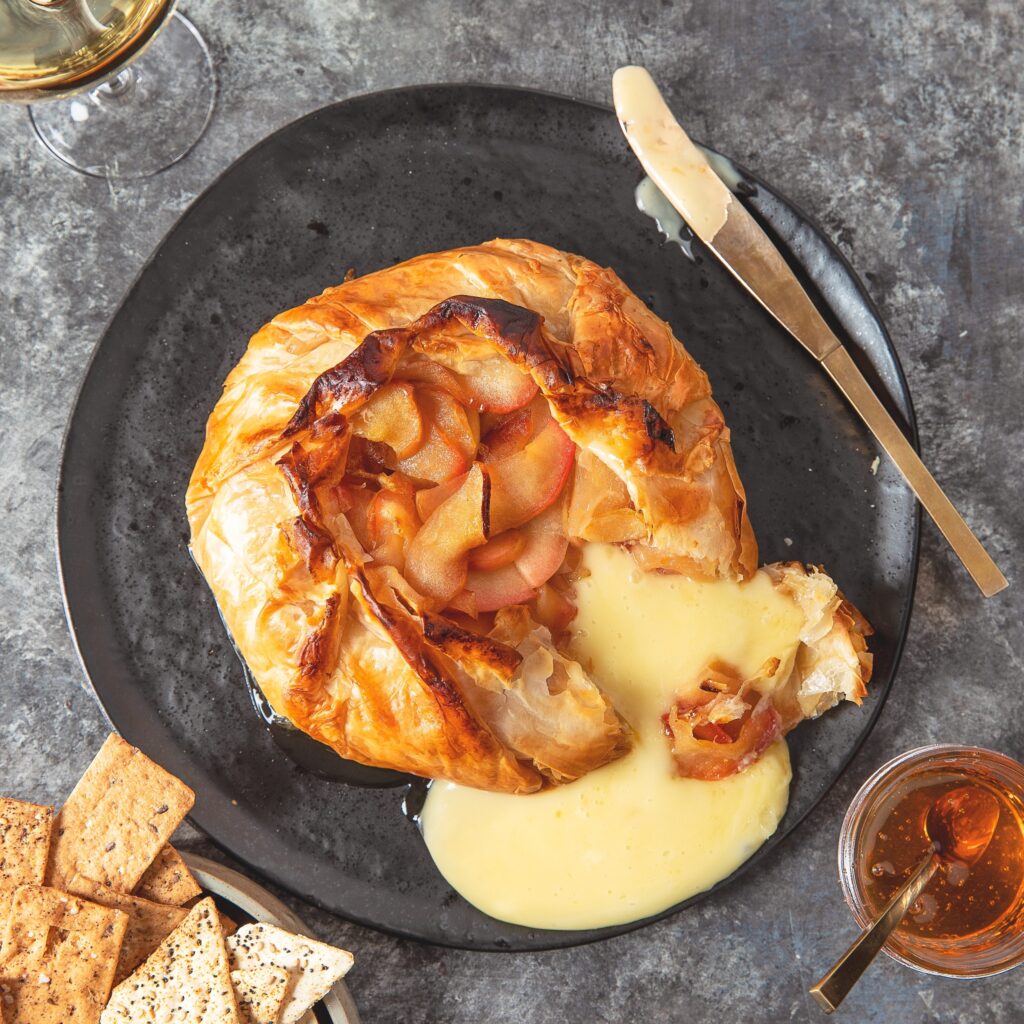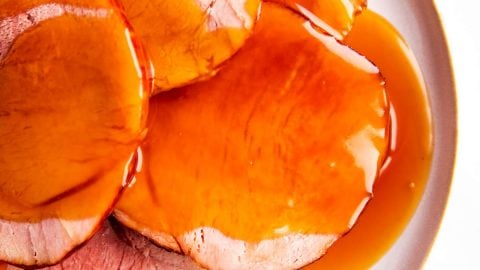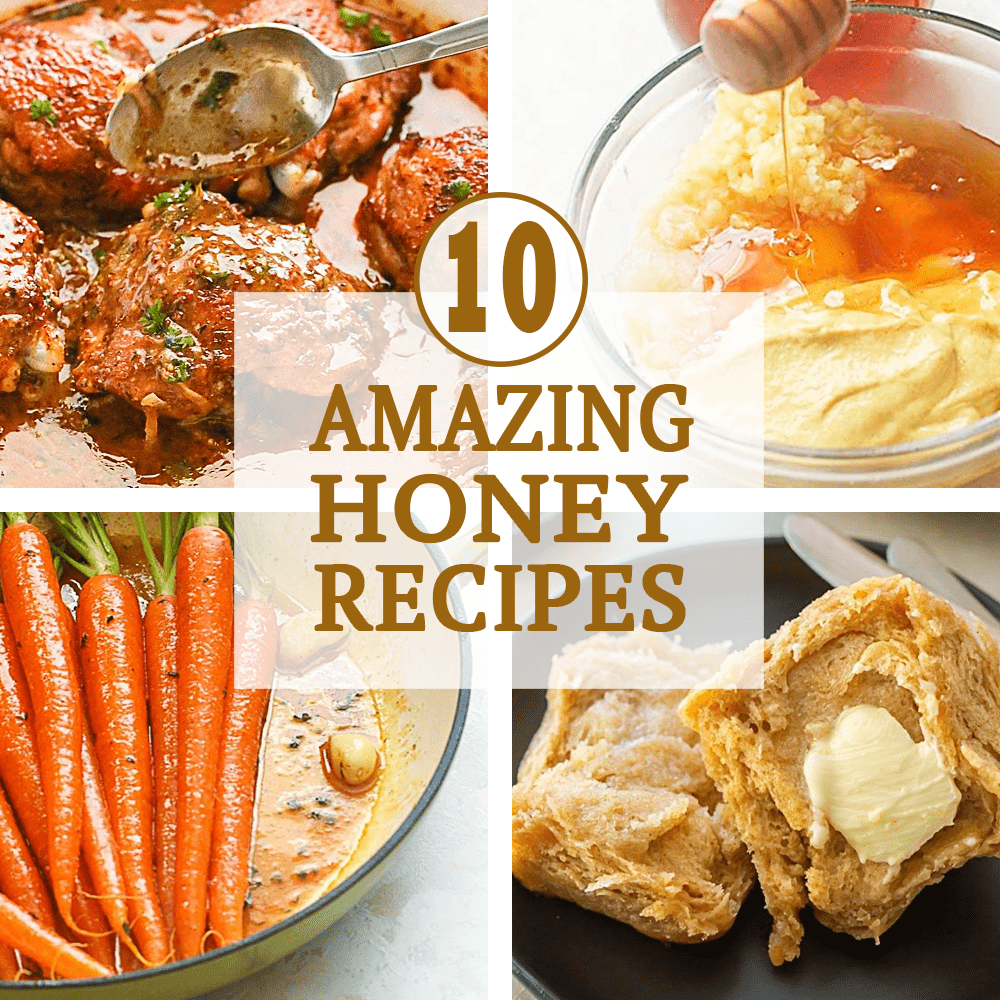
Imagine taking a bite of a perfectly roasted chicken, just off the grill, and discovering a burst of sweetness that takes your taste buds on a delightful rollercoaster ride. That’s the magic of honey on the plate – a stunning transformation of savory dishes that elevates them to a whole new level of flavor. From glazed vegetables to tangy marinated meats, this golden elixir adds a touch of sweetness that perfectly balances the savory notes, creating a culinary experience that you won’t soon forget. In this article, we will explore the art of using honey to transform your everyday dishes into extraordinary culinary masterpieces. So get ready to tantalize your taste buds and discover the secret to enhancing your favorite savory recipes with the deliciousness of honey!
Honey as a Savory Ingredient
Exploring the versatility of honey in savory dishes
Honey is not only known for its sweet, golden goodness, but it also has a place in savory cooking. Its unique flavor profile can add depth and complexity to a variety of dishes, making it a versatile ingredient to have in your culinary arsenal. From salad dressings and marinades to glazes for meats and vegetables, honey can elevate the taste of savory recipes in surprising and delightful ways.
The unique flavor profile of honey in savory recipes
When most people think of honey, they think of sweetness. However, honey also has subtle floral and earthy notes that can complement savory ingredients perfectly. Its natural sweetness can balance out the acidity or spice of certain ingredients, creating a harmonious blend of flavors. Whether you’re looking to add a touch of sweetness to a sauce or create a honey-glazed meat dish, the flavor profile of honey brings a unique and delicious element to savory recipes.
The benefits of using honey as a healthier alternative in savory cooking
In addition to its flavor-enhancing properties, honey also offers health benefits that make it an attractive alternative to traditional sweeteners in savory cooking. Unlike processed sugars, honey contains antioxidants and trace amounts of essential nutrients. It is also a natural energy booster and can aid in digestion. By using honey as a healthier alternative to sugar in savory dishes, you can enjoy the benefits of this natural sweetener while still indulging in delicious flavors.
Honey in Salad Dressings and Marinades
Creating delicious honey-based salad dressings
Salads can sometimes lack the depth of flavor needed to truly satisfy your taste buds. Adding a honey-based dressing to your salad can transform it from ordinary to extraordinary. The natural sweetness of honey pairs beautifully with tangy vinegars and zesty citrus juices, creating a balanced and flavorful dressing. Mixing honey with ingredients like olive oil, mustard, and herbs can create a delicious dressing that enhances the taste of fresh greens and vegetables.
Using honey as a natural sweetener in marinades
Marinades are a fantastic way to infuse flavor into meats and seafood before cooking. Instead of relying solely on sugar or other sweeteners, consider using honey as a natural and healthier option. Honey helps to tenderize meat while adding a touch of sweetness. By combining honey with ingredients like soy sauce, garlic, and ginger, you can create a savory marinade that elevates the flavors of your proteins.
Enhancing flavors with the addition of honey in dressings and marinades
Apart from its sweetening properties, honey adds a depth of flavor to dressings and marinades that is hard to replicate with other ingredients. Its complex flavor profile can bring out the best in other ingredients, creating a harmonious blend of tastes. The rich and velvety texture of honey adds a lusciousness to dressings and marinades, making them more enjoyable to consume. So, why settle for plain dressings or boring marinades when you can take your recipes to the next level with the addition of honey?

This image is property of www.washingtonpost.com.
Honey-glazed Meats and Seafood
How honey adds depth and caramelization to meat dishes
Honey is a fantastic ingredient for glazing meats, as it adds depth and caramelization to the final dish. When honey is exposed to heat, it naturally caramelizes, resulting in a beautiful golden-brown glaze that is both visually appealing and delicious. The glaze locks in the moisture of the meat, creating a succulent and flavorful bite. Whether you’re grilling, roasting, or sautéing, a honey glaze can take your meat dishes to new heights.
Exploring honey glazes for different types of meats
One of the great things about honey is its ability to pair well with a wide range of meats. Whether you’re cooking chicken, pork, beef, or even game meats like duck or venison, honey can elevate the flavors of these proteins. For lighter meats like chicken or fish, a citrus-infused honey glaze can add brightness and complement the flavors. For heartier meats like pork or beef, a smoky or spicy honey glaze can provide a satisfying contrast. The possibilities are endless when it comes to experimenting with honey glazes for different types of meats.
Improving the texture and flavor of seafood with honey glazes
Seafood often benefits from a touch of sweetness to balance out its inherent brininess. Honey can provide that much-needed sweetness while enhancing the natural flavors of seafood. From honey-glazed shrimp to honey-lime salmon, the addition of honey brings out the delicate flavors of fish and shellfish. Whether you’re grilling, baking, or broiling, a honey glaze can help improve the texture and flavor of seafood dishes, making them irresistible to the palate.
Honey in Sauces and Condiments
Adding a touch of sweetness to savory sauces
Sauces are the unsung heroes of savory dishes, adding moisture, flavor, and that extra touch of something special. By incorporating honey into your sauces, you can add a touch of sweetness that balances out the savory components. Honey can round out the flavors of tangy barbecue sauces, savory gravies, and rich pasta sauces. The natural sweetness of honey enhances the taste of these sauces, giving them a well-rounded and satisfying profile.
Creating unique flavor combinations with honey in condiments
Condiments like mustards, mayonnaises, and chutneys are often used to add that finishing touch to a dish. By infusing honey into these condiments, you can create unique flavor combinations that take your meal to the next level. For example, a honey-mustard sauce can add a sweet and tangy twist to sandwiches or grilled meats, while a honey-infused salsa can create a delicious balance of sweet and spicy. Don’t be afraid to get creative and experiment with different flavors to create your own signature condiments.
Using honey as a natural thickener in savory sauces
Thickening sauces can sometimes be a challenge, especially if you’re looking for a natural alternative to traditional thickeners like flour or cornstarch. Honey can serve as a natural thickener in savory sauces due to its viscous consistency. By incorporating honey into your sauce, you can achieve a luscious and silky texture without compromising on flavor. The natural sugars in honey caramelize when heated, helping to thicken the sauce and give it a rich and glossy finish.

This image is property of assets.epicurious.com.
Honey in Roasted and Grilled Vegetables
Enhancing the natural sweetness of vegetables with honey
Roasted and grilled vegetables are already delicious on their own, but adding a touch of honey can take them to a whole new level. Honey enhances the natural sweetness of vegetables, making them even more delectable. Drizzling honey over root vegetables like carrots or sweet potatoes before roasting can create a caramelized glaze that adds depth and complexity to their flavors. For grilled vegetables, brushing them with a honey-based marinade can create a beautiful char and give them a subtle sweetness.
Transforming roasted and grilled vegetables with honey-based glazes
Roasted and grilled vegetables are versatile and can be easily customized to suit different tastes. By using honey-based glazes, you can transform ordinary vegetables into something extraordinary. For example, a honey-balsamic glaze can elevate roasted Brussels sprouts to new heights, while a honey-soy glaze can add an irresistible umami flavor to grilled eggplant. The key is to experiment with different honey varieties and vegetable pairings to discover unique flavor combinations that you love.
Experimenting with different honey varieties and vegetable pairings
Honey comes in a wide array of flavors, each derived from the nectar of different flowers. This diversity allows you to experiment with various honey varieties to find the perfect pairing for your roasted or grilled vegetables. Lighter honey varieties like clover or orange blossom can enhance the delicate flavors of vegetables like asparagus or zucchini, while darker honey varieties like buckwheat or chestnut can lend a richer and more robust flavor to heartier vegetables like onions or mushrooms. Don’t be afraid to explore the world of honey and discover new and exciting combinations with your favorite vegetables.
Honey in Breads and Baked Goods
Using honey as a substitute for sugar in bread recipes
Incorporating honey into bread recipes not only adds sweetness but also imparts a unique flavor and moisture to the final product. It can be used as a substitute for sugar, giving your bread a more complex taste. The natural sugars in honey facilitate browning during baking, resulting in a beautifully golden crust. Honey can also help retain moisture in bread, keeping it soft and fresh for longer. Whether you’re making a classic honey wheat bread or experimenting with honey in a fruit or nut bread recipe, the addition of honey can transform your baked goods into something truly special.
Exploring the texture and moisture-enhancing properties of honey in baked goods
One of the standout features of honey in baked goods is its ability to improve texture and moisture. The natural sugars in honey attract and retain moisture, ensuring that your baked goods stay moist and tender. Whether you’re making cookies, cakes, or pastries, incorporating honey can result in a softer and more enjoyable texture. It also helps to extend the shelf life of baked goods, allowing you to savor their freshness for longer. Don’t be surprised if your friends and family ask for your secret to achieving such deliciously moist baked goods!
Infusing unique flavors into breads and baked goods with different types of honey
Just as honey adds depth and complexity to savory dishes, it can also infuse unique flavors into breads and baked goods. Different varieties of honey offer distinct taste profiles that can elevate the flavors of your baked creations. For example, a lavender honey can add a floral note to a lemon cake, while a buckwheat honey can lend a deep and earthy flavor to a spiced bread. By exploring the world of honey and experimenting with different types, you can unlock a whole new realm of flavors in your breads and baked goods.

This image is property of www.savorynothings.com.
Honey in Cheese and Charcuterie Boards
Pairing honey with different types of cheeses
The combination of cheese and honey has been a classic pairing for centuries, and for good reason. The natural sweetness of honey beautifully complements a variety of cheeses, enhancing their flavors and creating delightful taste experiences. From mild and creamy cheeses like Brie or Camembert to sharp and tangy cheeses like blue or goat cheese, there is a honey variety that can perfectly balance the flavors. Drizzling honey over a cheeseboard or serving it alongside different cheeses allows you to create a balance of sweet and savory that is sure to impress your guests.
Enhancing the flavors of cured meats with honey drizzles
Just as honey can elevate the taste of cheeses, it can also enhance the flavors of cured meats. The salty and savory nature of cured meats pairs wonderfully with the sweetness of honey. Drizzling honey over thinly sliced prosciutto or salami can create a delightful contrast of flavors, providing a nuanced and indulgent experience. The sticky and silky texture of honey also adds a luxurious touch to charcuterie boards, making them visually appealing and irresistible to taste.
Creating a balance of sweet and savory on charcuterie boards with honey
A well-crafted charcuterie board offers a balance of different flavors, textures, and colors. Honey plays a crucial role in achieving that balance by adding a touch of sweetness to counter the salty and savory components. By strategically placing honey alongside different cheeses, cured meats, and other accompaniments like nuts or fresh fruits, you can create a harmonious blend of sweet and savory on your charcuterie board. The combination of flavors will keep your guests coming back for more, making your charcuterie board the star of any gathering.
Honey in Stir-fries and Glazed Vegetables
Creating rich and sticky glazes with honey for stir-fried dishes
Stir-fried dishes are all about bold flavors and quick cooking. Adding a honey-based glaze to your stir-fried dishes can create a rich and sticky sauce that coats the ingredients perfectly. The natural sweetness of honey balances out the saltiness and spice in stir-fries, creating a harmonious combination of flavors. From honey-ginger glazes to honey-soy sauces, the addition of honey takes stir-fried dishes to a whole new level of deliciousness.
Discovering traditional honey-based stir-fry recipes from different cuisines
Honey has been used in traditional stir-fry recipes in various cuisines around the world for centuries. Exploring these recipes can give you a glimpse into the diverse culinary traditions that incorporate honey in savory cooking. For example, Chinese cuisine often features honey in stir-fried dishes like honey walnut shrimp or honey sesame chicken. Korean cuisine utilizes honey in popular dishes like spicy honey glazed chicken or beef bulgogi. Learning from these traditional recipes can inspire you to create your own unique interpretations of honey-based stir-fries.
Adding a touch of sweetness to glazed vegetables using honey
Glazed vegetables offer a burst of flavor and a glossy finish that can elevate any meal. By incorporating honey into your vegetable glazes, you can add a touch of sweetness that enhances their natural flavors. From honey-glazed carrots to honey-roasted Brussels sprouts, the addition of honey can take these vegetables from simple to spectacular. The caramelization of honey during cooking creates a beautiful glaze that locks in the flavors and adds a deliciously sweet and sticky finish. Don’t be surprised if your glazed vegetables become the star of the dinner table!

This image is property of www.africanbites.com.
Honey in Soups and Stews
Balancing flavors with a hint of honey in savory soups
Soups are meant to comfort and nourish, and adding a hint of honey can take them to another level of deliciousness. By incorporating honey into savory soups, you can balance out the flavors and create a more well-rounded taste. The sweetness of honey can counterbalance the acidity of tomatoes or the bitterness of certain vegetables, making the soup more palatable. Whether you’re making a hearty vegetable soup or a classic tomato soup, a touch of honey can make all the difference in achieving that perfect balance of flavors.
Using honey to counterbalance the acidity in tomato-based stews
Tomato-based stews often have a tangy and acidic quality that can be overwhelming for some palates. The addition of honey can help counterbalance this acidity and bring out the natural sweetness of the tomatoes. By incorporating honey into your tomato-based stews, you can achieve a more balanced and harmonious flavor profile. The honey adds a subtle sweetness that complements the acidity, resulting in a stew that is rich, robust, and utterly satisfying.
Experimenting with honey in different types of soup and stew recipes
Honey is a versatile ingredient that can be used in a variety of soup and stew recipes. Whether you’re making a chicken noodle soup, a beef stew, or a spicy chili, don’t be afraid to experiment with the addition of honey. Its natural sweetness can bring out the flavors of other ingredients and add a depth that takes your soup or stew to another level. The key is to start with a small amount of honey and adjust to taste, allowing the flavors to meld and develop as the dish simmers. Let your creativity guide you as you explore the world of honey-infused soups and stews.
Honey-infused Side Dishes
Incorporating honey into savory side dishes like roasted carrots or Brussels sprouts
Side dishes are the perfect canvas to experiment with different flavors and ingredients, and honey can add that extra touch of sweetness to elevate your creations. For example, roasted carrots drizzled with honey can create a caramelized glaze that brings out their natural sweetness. Brussels sprouts roasted with honey and balsamic vinegar can offer a mouthwatering blend of sweet and tangy flavors. By incorporating honey into savory side dishes, you can create a symphony of tastes that delights the palate and complements the main course perfectly.
Creating sweet and savory flavor combinations in grain-based sides
Grains like rice, quinoa, or couscous offer a neutral base that can be enhanced with different flavors and ingredients. By incorporating honey into grain-based side dishes, you can create sweet and savory flavor combinations that add complexity to your meals. For example, a honey and cinnamon-infused rice can provide a delightful contrast of flavors when paired with savory dishes like roasted chicken or grilled vegetables. The key is to use honey sparingly, allowing it to enhance the flavors without overpowering the dish.
Elevating the taste of simple vegetables with a honey glaze
Simple vegetables like green beans, asparagus, or broccoli can be transformed into something truly special with the addition of a honey glaze. Drizzling honey over steamed or roasted vegetables can add a touch of sweetness that elevates their taste. This glaze can also create a beautiful sheen on the vegetables, making them visually appealing. Whether you’re serving these honey-glazed vegetables as a side dish or incorporating them into a larger meal, their enhanced flavors will leave a lasting impression.
In conclusion, honey is a versatile and delightful ingredient that can truly transform savory dishes. Whether you’re using it in salad dressings, marinades, glazes, sauces, or even in breads and baked goods, honey brings a unique flavor profile, health benefits, and a touch of sweetness to an array of dishes. By exploring the various ways honey can be incorporated into savory recipes, you can elevate your cooking, surprise your taste buds, and create unforgettable meals. So go ahead, grab a jar of honey, and let your culinary adventures begin!

This image is property of www.marthastewart.com.